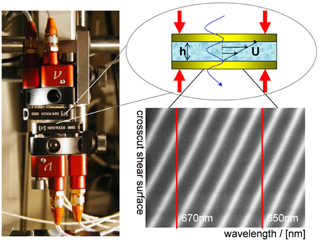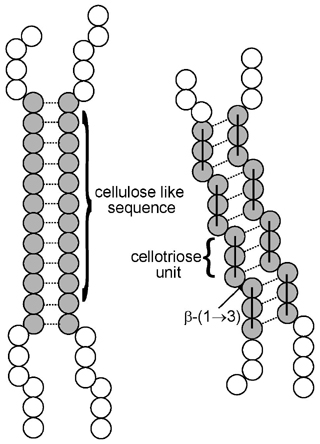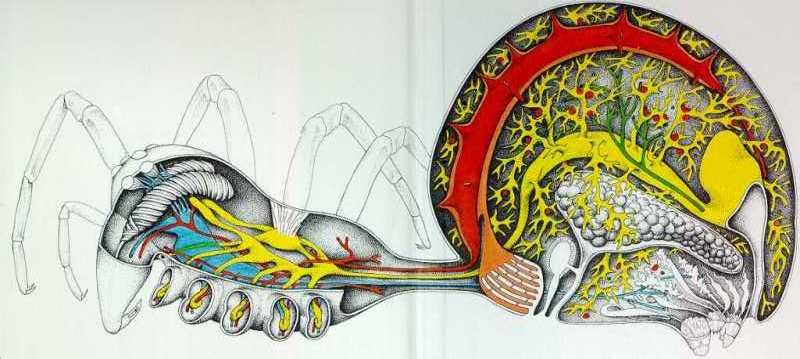|
|
|
|
|
|
|
|
| A new Flexure-based Microgap Rheometer
(FMR)
with Gareth McKinley |
| |

|
| Built a new Flexure-based Microgap Rheometer (FMR) that allows the determination of the viscometric properties of small fluid samples (<10 microliter) in adjustable gaps that cover meso-scale dimensions of 200 micrometer down to micro-scale dimensions of 1 micrometer. This is enabled due to the usage of compound flexures, that minimize orthogonal displacement, and the application of white light interferrometry, which assures parallelism and allows absolute gap determination. | |
| Modeling of elasto-capillary necking
and break-up.
with Jens Eggers, Marco Fontel & Gareth McKinley |
| |
Developement of a 1-D model of the necking in capillary break-up experiments on the basis of microscopic imaging of the self similar structure close to the singularity of the break-up point. |
| Capillary break-up of liquid columns
with José Bico, Gareth McKinley & Vladimir Entov |
| Dripping of a jelly liquid | Concentrated surfactant solutions
eventually exhibit particular molecular structures (“worm like micelles”)
which lead to a jelly liquid. The material behaves as a soft elastic solid
when a light stress is applied but flows as a liquid under higher stresses.
When a droplet of such a liquid drips from a pipette, a long thread connects the droplet to the pipette and progressively necks and breaks down when the thread reaches a certain diameter. Click on any picture to watch a video (4Mo).
|
| Jet break-up | A jet of liquid is unstable because
of surface and usually breaks into small droplets. The addition of a tiny
quantity of polymer provides an additive elastic stress which stabilizes
the liquid column.
The snapshots represent a jet of water containing traces of hydrophilic polymer (polyacrylamide). The droplets are formed but remain connected by a thin thread. The first droplet then “eats” its followers until it detaches. Click on the picture to watch a video (4.5Mo). |
| Gelation mechanism
of (1,3)(1,4)-b-barley glucan in beer
with N. Böhm & W.-M. Kulicke |
| |

|
| The formation of microgels during the beer brewing process and the clogging of filters in the final filtration result in a lower quality and throughput volume. The investigation of the gelling mechanism of barley (1,3)(1,4)-b-glucan is leading to the developement of new and improved methods in the brewing process | |
| New rheo-optical techniques
with U. Reinhardt and W.-M. Kulicke |
|
|
Modulated polarized laser light
allows for highly precise detection of birefringence and molecule
orientation in flow fields. However the highly delicate and
sensitive setups do not allow for an easy industrial application of these
techniques. New modulation principles and robust apparati will overcome
these barriers |
| Viscoelastic properties of silk
dope of bombyx mori and nephalia clavipes
with Nicola Kojic and Gareth McKinley |

|
|
|
Silkworm and Spider silk contains about 60% of a crystalline repeating polypeptide sequences (GAGAGS) connected by amino acids with bulkier sidechains that do not crystallize and show superior mechanical properties compared to synthesized polymers. Although the liquid crystalline character of the silk dope has been observed, the viscoelastic properties of the silk dope prior to spinning, which determine the extrusion and spinning process, still need to be investigated. |
|